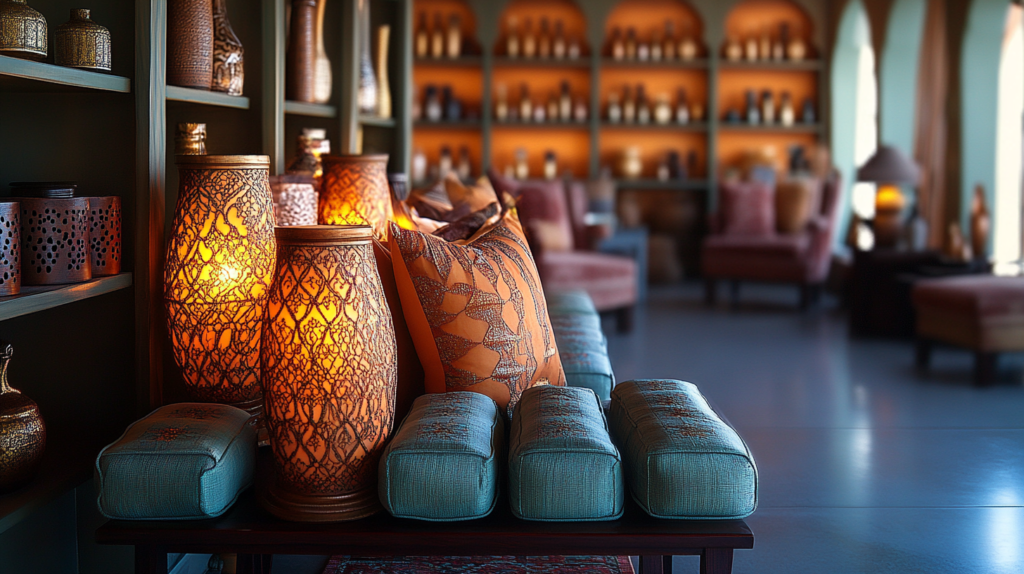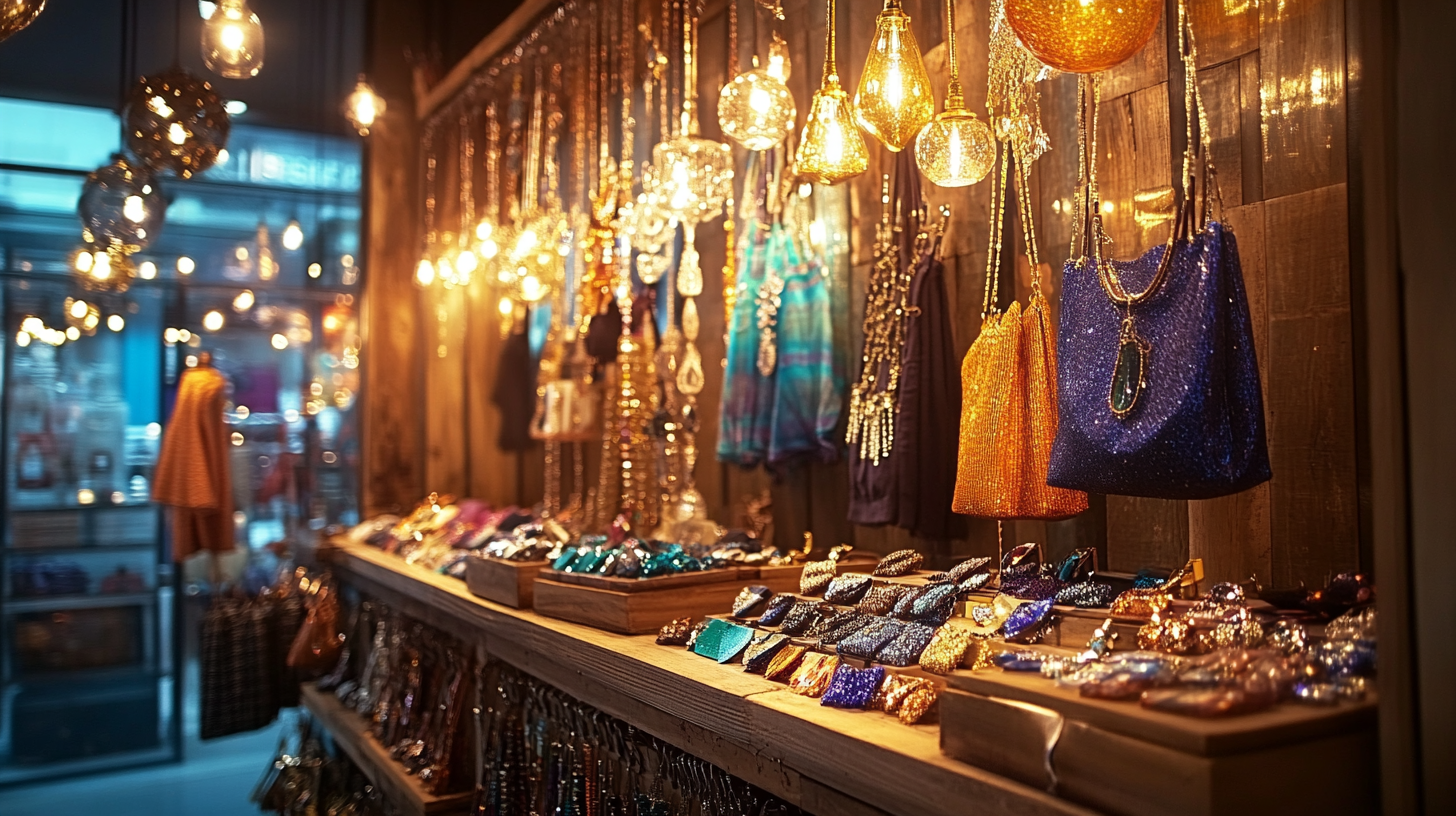In the realm of luxury living, where opulence meets sophistication, the concept of a Dubai penthouse has evolved far beyond mere residential space. Like a perfectly tailored haute couture gown, these sky-high sanctuaries represent the epitome of bespoke living, where every detail is meticulously crafted to reflect personal style and refined taste. The fusion of fashion and real estate has created an unprecedented phenomenon in Dubai’s luxury market, where penthouses are now treated as carefully curated fashion statements, each telling its own unique story of elegance and innovation.
The Altitude of Aesthetics: Where Skyline Meets Styling
Fashion and architecture have always shared a profound connection, but nowhere is this relationship more evident than in Dubai’s premium penthouse market. The structural elements of these prestigious properties mirror the principles of haute couture, where clean lines and dramatic silhouettes create an unmistakable presence against the urban canvas. These elevated residences don’t just occupy space; they command it, much like how a masterfully designed garment transforms its wearer.
The interplay between interior and exterior spaces in Dubai’s luxury penthouses reflects the layering techniques beloved by fashion designers. Floor-to-ceiling windows serve as the perfect frame, much like how a well-chosen accessory complements a designer outfit. These transparent boundaries blur the lines between indoor luxury and outdoor spectacle, creating a seamless transition that fashion enthusiasts would recognize from the way evening wear flows from one element to another.
Every angle and corner in these prestigious properties is thoughtfully considered, similar to how a fashion designer considers each drape and fold. The architectural elements, from sweeping staircases to sculptural lighting fixtures, are positioned with the same precision as embellishments on a couture piece. These design choices create a rhythm throughout the space that guides the eye and creates movement, much like how a well-designed garment flows with its wearer.
The attention to detail in these penthouses extends to the selection of materials, which parallels the fabric choices in high fashion. From rare marble slabs that echo the exclusivity of limited-edition textiles to custom metalwork that reflects the craftsmanship of haute couture embroidery, each element is chosen not just for its aesthetic appeal but for its ability to contribute to the overall narrative of luxury living.
Couture in Construction: Crafting Vertical Vogue
The process of designing and building a luxury penthouse in Dubai mirrors the creation of a couture collection. Each project begins with a vision, much like a fashion designer’s mood board, where inspiration is drawn from various sources to create something truly unique. The architectural teams work like fashion houses, where every detail is scrutinized and refined until perfection is achieved.
In recent developments, penthouses are being constructed with dedicated fashion spaces that rival the most exclusive boutiques. These private shopping suites, spanning up to 500 square feet, feature climate-controlled wardrobes, professional lighting systems, and rotating display units that showcase couture pieces as works of art. The integration of these spaces represents an investment ranging from $100,000 to $500,000, depending on the sophistication of the installation.
The materials used in construction are sourced globally, similar to how fashion houses seek out the finest fabrics and embellishments. Rare stone varieties from Italian quarries, hand-blown glass from Murano, and custom-made fixtures from artisan workshops worldwide come together to create these extraordinary spaces. The cost of materials alone can reach $3,000 per square foot, reflecting the same level of investment as creating a haute couture garment.
The craftsmanship involved in these projects employs traditional techniques alongside cutting-edge technology, much like modern fashion houses. Master craftsmen spend thousands of hours perfecting every detail, from hand-carved moldings to custom-fitted cabinetry, ensuring that each element meets the exacting standards of luxury living.
The Designer’s Canvas: Curating Elevated Environments
The interior design of Dubai’s luxury penthouses has become a playground for fashion-inspired innovation. Interior designers collaborate with fashion houses to create spaces that reflect current trends while maintaining timeless appeal. These collaborations have led to the development of exclusive furniture collections and bespoke pieces that blur the lines between fashion and interior design.
Color palettes in these penthouses are carefully selected to create different moods throughout the space, much like how fashion collections are built around specific themes. The use of neutral tones punctuated by bold accents mirrors the way fashion designers balance their collections. Some penthouses feature seasonal color schemes that can be adjusted through interchangeable elements, allowing residents to update their living space as frequently as their wardrobe.
Texture plays a crucial role in these designs, with layers of different materials creating depth and interest. Walls might be adorned with hand-painted silk wallpapers costing upwards of $1,000 per panel, while floors feature rare wood species or custom-designed carpets that could command prices of $50,000 or more. These elements work together to create an atmosphere of understated luxury that fashion connoisseurs would appreciate.
The lighting design in these spaces is approached with the same attention to detail as runway lighting. Custom fixtures, often created in collaboration with renowned designers, can cost anywhere from $25,000 to $150,000 per piece. These lighting elements are strategically placed to highlight architectural features and create ambiance, much like how lighting is used to enhance a fashion presentation.

Social Currency: The Status of Sky-High Style
The ownership of a fashion-forward penthouse in Dubai has become a powerful statement of personal brand and style. These properties, often featured in luxury lifestyle magazines and social media, have become as much a part of their owners’ public image as their fashion choices. The average price point for these prestigious properties ranges from $5 million to $30 million, with some exceptional properties commanding even higher prices.
The social aspect of penthouse living extends beyond mere ownership. These spaces are designed to entertain and impress, with features like private rooftop pools, entertainment rooms, and outdoor terraces that can accommodate up to 100 guests. The design of these spaces often includes elements that create perfect photo opportunities, recognizing the importance of social media in today’s luxury lifestyle.
Many penthouse owners host exclusive fashion events and private showings in their homes, turning their residences into temporary galleries or boutiques. This dual functionality has led to the development of specialized storage solutions and display areas that can be transformed for various occasions, with installation costs ranging from $75,000 to $200,000.
The connection between fashion and real estate extends to the way these properties are marketed. Like fashion campaigns, penthouse marketing often features collaborations with luxury brands and influential figures in the fashion industry. These marketing efforts can command budgets of $500,000 or more, reflecting the properties’ positioning in the luxury market.
Sustainable Sophistication: Eco-Conscious Elevation
The fashion industry’s movement toward sustainability has found its parallel in penthouse design. Developers are incorporating eco-friendly features that don’t compromise on luxury, much like how fashion houses are embracing sustainable practices while maintaining their high standards. These initiatives include solar panels disguised as design elements, water recycling systems, and energy-efficient climate control.
The use of sustainable materials has become increasingly important in penthouse construction. Recycled materials are transformed into luxury finishes, while innovative new materials that minimize environmental impact are being developed specifically for high-end properties. These sustainable choices often come with a premium, adding 15-30% to construction costs, but are seen as essential investments in the future of luxury living.
Smart home technology is integrated throughout these properties, allowing residents to monitor and optimize their energy usage. These systems, which can cost upwards of $250,000 to install, provide detailed data about the property’s environmental impact while maintaining the highest levels of comfort and convenience.
Advanced air filtration systems and biophilic design elements are incorporated to create healthy living environments. Vertical gardens and green walls, which can cost $1,500 per square meter to install and maintain, serve both aesthetic and environmental purposes, bringing nature into these elevated spaces.
Investment Couture: The Financial Fabric of Luxury Living
The investment potential of fashion-forward penthouses in Dubai represents a unique intersection of real estate and luxury goods markets. These properties have shown remarkable appreciation rates, with some locations experiencing value increases of 15-20% annually over the past five years. The limited availability of such unique properties contributes to their investment appeal, similar to how rare fashion pieces appreciate over time.
The rental market for these prestigious properties is equally robust, with short-term leases commanding premium rates during fashion weeks and other high-profile events. Monthly rental rates can range from $30,000 to $150,000, depending on the property’s location, size, and design features. The potential for rental income has led to the development of specialized property management services that cater to the unique needs of fashion-conscious tenants.
Property developers are increasingly offering customization packages that allow buyers to personalize their penthouses before completion, similar to the bespoke services offered by fashion houses. These customization options can add 20-40% to the base price but result in unique properties that command premium resale values.
The maintenance and updating of these properties require significant ongoing investment, with annual maintenance costs ranging from 1-3% of the property value. However, like investing in a collection of haute couture pieces, the preservation of these assets is crucial to maintaining their value and appeal in the luxury market.
